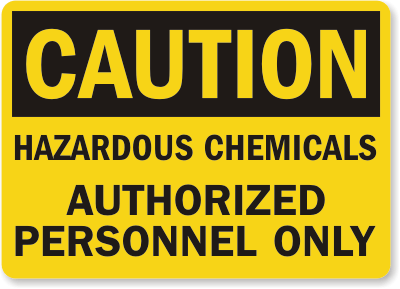 Chemicals are abundant in most workplaces, and even those that don’t use or store hazardous chemicals still represent a risk to employees. Even common cleaning supplies can pose a threat if used incorrectly. In fact, 32 million people are injured each year from chemical hazards in the workplace. For this reason, employers must remain vigilant for chemical hazards. Proper storage, labeling and training of employees will help to ensure that workers aren’t injured on the job.
Chemicals are abundant in most workplaces, and even those that don’t use or store hazardous chemicals still represent a risk to employees. Even common cleaning supplies can pose a threat if used incorrectly. In fact, 32 million people are injured each year from chemical hazards in the workplace. For this reason, employers must remain vigilant for chemical hazards. Proper storage, labeling and training of employees will help to ensure that workers aren’t injured on the job.
Known Hazardous Chemicals
Workplaces that store, use or transport known hazardous materials must develop a HazCom program by law. The plan must be in writing and available to all employees at all times. It should include a list of all known chemicals, a description of their labeling, how to safely handle these chemicals and emergency contact information.
Common Chemicals Also Pose Risks
One of the easiest ways to prevent injuries from common chemicals is to ensure that all items are properly labeled. Never pour chemicals, such as cleaners, into empty bottles that have other labeling on them. In addition, workplaces that mix their own cleaning solutions should permanently label bottles and dispensers in a font that is easy to read. If the workplace has employees who are not native English speakers, label chemicals in additional languages as well.
Combustibles
Another chemical hazard in the workplace is from combustible chemicals. These are chemicals of any hazard level that are likely to ignite when they encounter a heat source. Many workplace accidents occur when employees store combustible chemicals too close to radiators, heating vents, space heaters or other heat sources. Proper training of employees to never store anything near heat sources will typically prevent accidents like this from occurring.
Employee Training
Employees should be trained in several areas to ensure their safety around chemicals. First, adequate safety gear such as gloves and eye protection must be provided by the employer. Employees must them be trained on how to wear the gear properly and when to wear it. Employees must also be trained on the proper procedures to take if they are exposed to harmful chemicals. This includes flushing the eyes or skin with water and contacting emergency medical professionals.





